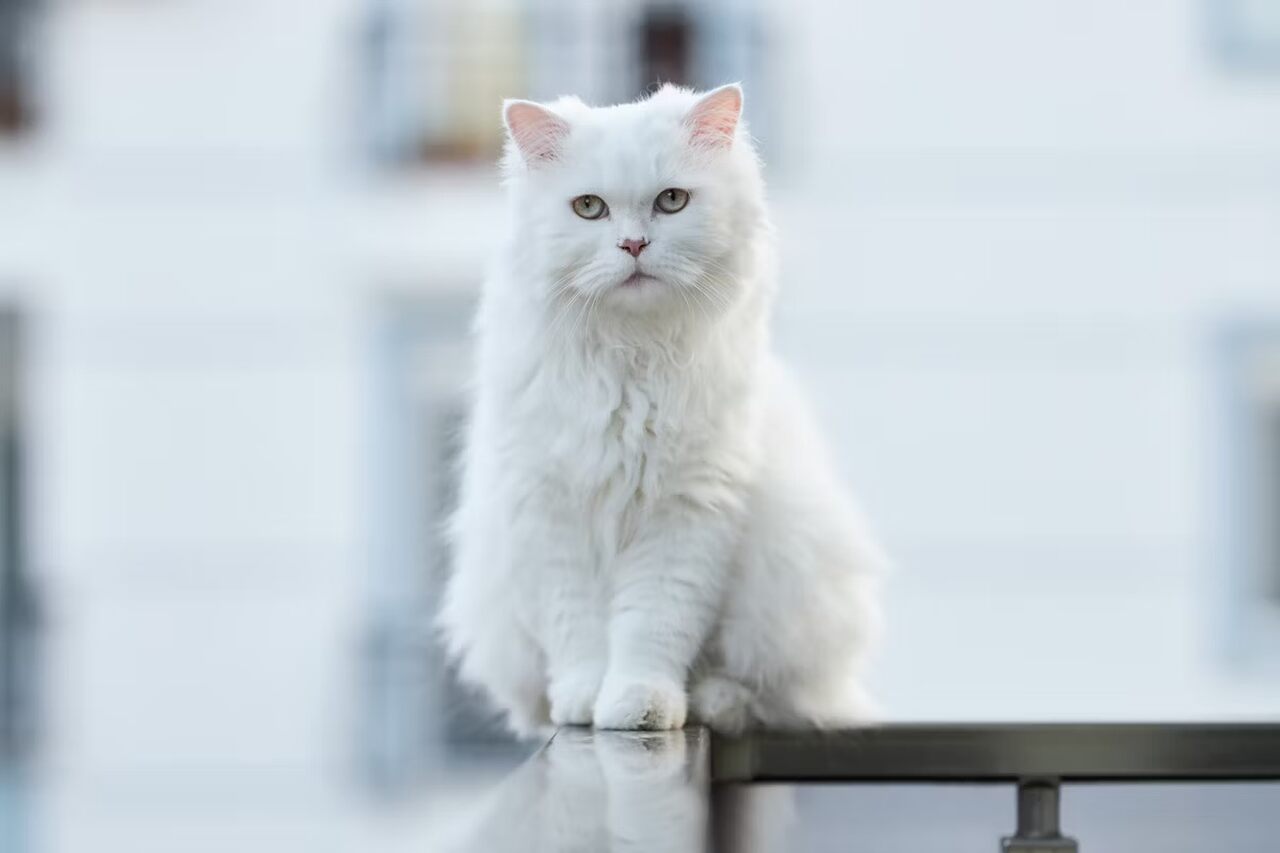
If you’re thinking about adding a white cat to your family, here are a few things to consider before making that decision.
1. There aren’t many pure white cats
Experts say that only 5% of cats have a completely white coat. “The rarity depends on the breed and genetic population,” explained Dr. Ashly Smith, Regional Medical Director at Small Door Veterinary, in a conversation with Country Living.
“While white is less common than tabby or black, some breeds (like Turkish Angoras and Persians) often have white coats.”
2. Persians are probably the most popular
Speaking of Persians, they always top the list of most sought-after breeds by cat lovers, according to The Cat Fanciers Association.
The fur of this cute, flat-faced feline comes in a wide variety of colors and patterns, but it is most famous for its porcelain-white coat.
3. White cats are not albino
Contrary to what many think, white cats are not albino. Albinism is a rare genetic disorder caused by a mutation in the TYR genes, responsible for producing melanin enzymes, which affects not only the color of the fur but also the color of the animal’s eyes.
The white coat color in cats, on the other hand, is due to a dominant W gene. “Albino cats have no pigmentation at all, while white cats simply have a gene that masks other colors,” explained Dr. Smith.
4. White cats can get sunburned
Although they are not albino, the lack of pigmentation in the coats of white cats can make them prone to sunburn if exposed to sunlight for long periods.
“White cats (especially those with pink skin) are at higher risk for sunburn and squamous cell carcinoma. It’s recommended to keep them indoors or use pet-safe sunscreen,” warned Dr. Smith.
5. White cats are believed to bring good luck
While black cats are associated with witchcraft, Halloween, and bad luck, there is a popular myth that white cats can bring good luck.
“White cats are celebrated in parts of the world like Russia and Asia as bringers of good fortune,” said Dr. Rebecca Greenstein, veterinary medical advisor at Rover, to Country Living.
“The most obvious example would be the image of the iconic waving white cat known as Maneki-neko, valued in Japan (and beyond!) for supposedly bringing luck and success to its owners.”
6. Deafness is common in white cats
The W gene, which gives white cats their coat color, can also cause abnormalities in the inner ear, leading to hearing loss. But this condition does not affect all white cats equally.
According to Cornell University College of Veterinary Medicine, 17 to 22 percent of white cats with eye colors other than blue are born deaf. If a white cat has one blue eye, that percentage increases to 40 percent, while up to 85 percent of white cats with two blue eyes are deaf.
7. White cats have striking eyes
Speaking of eyes, Dr. Smith said that cats with white coats usually have bright eyes in shades of blue, green, or gold, or they have heterochromatic eyes, which is also a result of the W gene.
8. White cats come in many different breeds
White cats are available in many different and popular breeds. “Breeds like Persians, Maine Coons, Turkish Angoras, British Shorthairs, and even some Siamese mixes can have white coats,” said Dr. Smith.
While they may be white, these cats can also have other colors. There is only one breed in the world whose coat is always white: the magnificent Khao Manee, an expensive and rare cat native to Thailand.
9. White cats are generally calm
There are many generalizations about the personalities of cats based on the color of their fur. It is believed that black cats are affectionate, while orange cats are more playful and clumsy.
White cats are generally considered to be a little shy, relaxed, and usually calm. But it’s worth remembering that this is just a stereotype.
“Temperament is based on numerous genetic and environmental factors and varies greatly among individuals,” added Dr. Greenstein.
10. White cats have lived in the White House
Some white cats have lived in the White House. William McKinley, the 25th president of the United States, kept a pair of Turkish Angoras named Enrique DeLome and Valeriano Weyler during his presidency.
Cats with white markings that have lived in the White House include the Siamese cats of Rutherford B. Hayes, Gerald Ford, and Jimmy Carter, as well as Socks, the black-and-white kitten of the Clintons.

